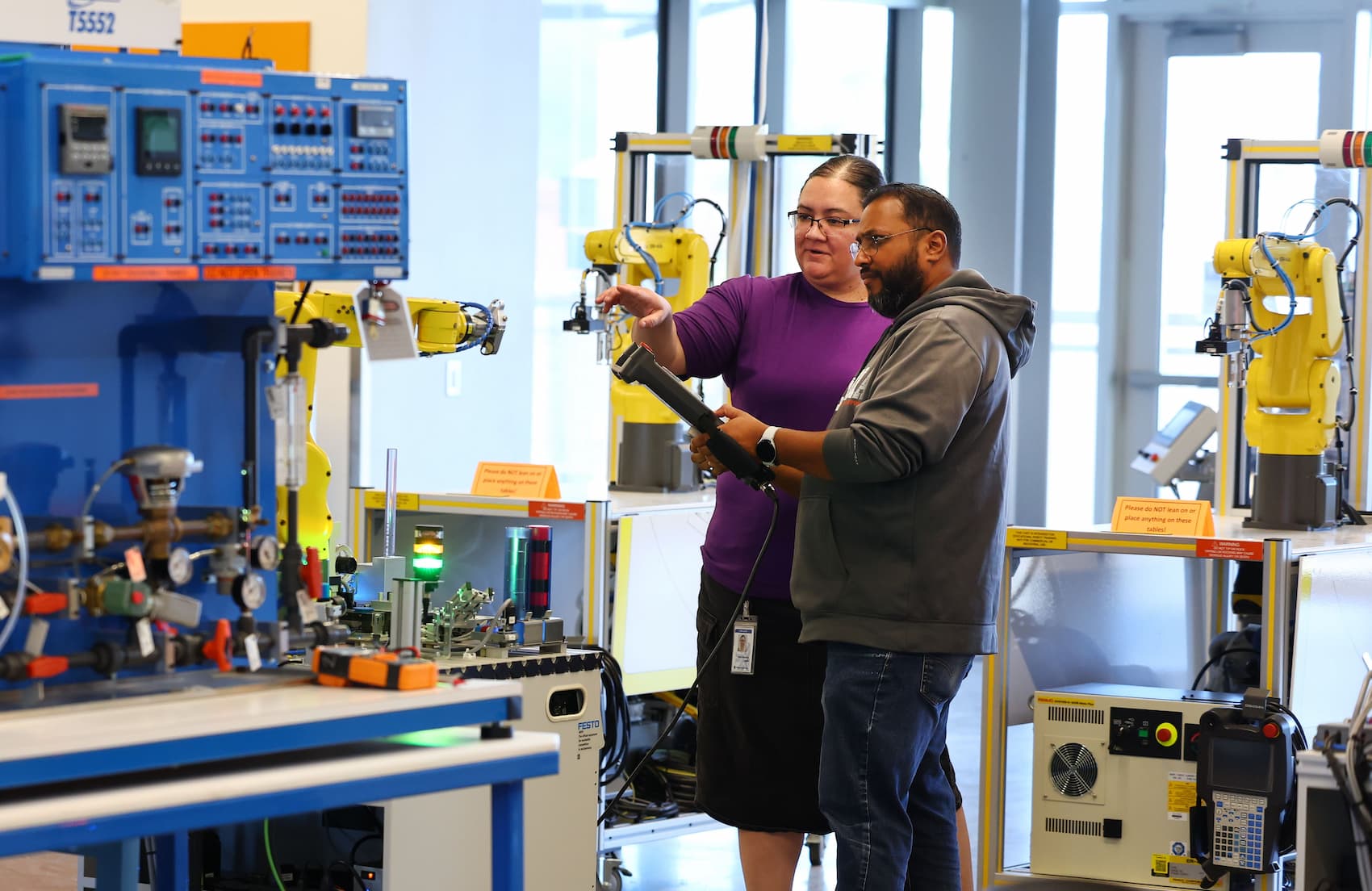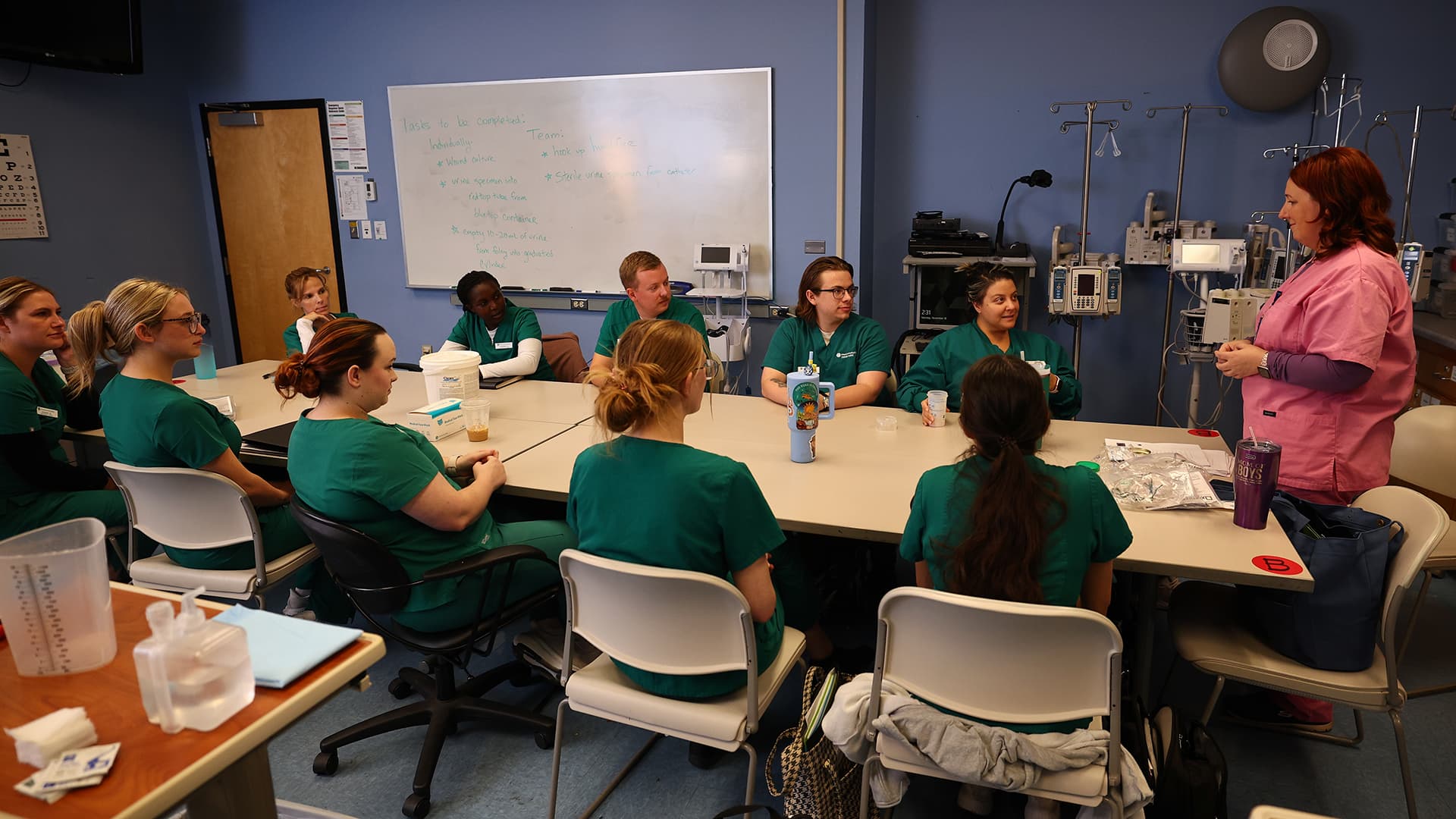State Opportunity Index event brings together state leaders, highlights promising approaches

Mississippi’s workforce development agency has embedded career coaches into nearly every public high school statewide.
Indiana redesigned its high school diploma requirements to incentivize work-based learning experiences for high school students.
And in Virginia, decision-making authority is aligned across agencies responsible for education, workforce, and economic development, including a first-of-its-kind Virginia Office of Education Economics.
More than 300 education and industry leaders from 36 U.S. states came together Oct. 21 in Washington, D.C., to learn from one another about how states are connecting education after high school with economic opportunity. At the daylong event, the leaders explored data from the recently released 2025 State Opportunity Index and learned about promising approaches in other states. This is the second iteration of the report, which was first launched in 2024.
Among its findings, the Index finds that nationally, 70 percent of the country’s recent graduates of public colleges and universities experience a positive return on their investment within 10 years of graduation. It also measures graduates’ return on investment in education for each U.S. state and Washington, D.C.
“We know that it’s not enough to just complete a credential; we need to make sure that credential is a gateway to opportunity for every learner,” said Strada Vice President of Research Nichole Torpey-Saboe, who presented the State Opportunity Index findings at the convening. “This is a complex challenge, and it’s not easy to even know where we start and where we stand.
“That’s the goal of this Index: to create a set of measures that can help us understand where every state is and then track progress and celebrate the success that we see,” she continued.
Besides the return-on-investment measurement, the event and the Index highlighted progress in five research-backed focus areas: Clear Outcomes, Quality Coaching, Affordability, Work-Based Learning, and Employer Alignment. The Index showcases these as keys to improving employment outcomes for learners and employers alike:
Clear Outcomes
Nationally, this year’s Index shows states have made broad-based progress in this area — including active work to enhance wage records in order to have more actionable information about employment outcomes.
Among the states making promising advancements in clear outcomes are Montana, which has established decision-making processes and structures for an education-to-employment data system, and Minnesota, which has developed tools that make education and employment outcomes data accessible for policymakers, institution leaders, employers, and students.
“Things are changing not just faster than we expected, but faster than we understand,” Harrison Keller, president of the University of North Texas, said in a panel discussion moderated by Strada President and CEO Stephen Moret. “For students and their families, there’s this concern that they sense they’re going to need some kind of education beyond high school to have access to good jobs. But is the return on investment going to be there? Is it worth the risk?”
Quality Coaching
The Index shows that among the ingredients of quality coaching, timely labor market information is the most rare.
Students are most likely to receive support setting goals (70 percent at four-year institutions, 74 percent at two-year) and overcoming obstacles (73 percent at four-year institutions, 74 percent at two-year), while they are least likely to receive timely information about labor market opportunities (21 percent at four-year institutions, 33 percent at two-year).
AccelerateMS, the workforce development agency for Mississippi, operates a statewide career coaching program that guides middle and high school students in exploring education and career paths, helping them to identify high-wage, high-demand jobs and connecting them with local employers.
One key to the program’s success is that it operates outside the school system, though the coaches are embedded at nearly every public high school in the state, AccelerateMS Executive Director Courtney Taylor shared in one session at the convening.
“We have a system that's like everybody else's, where we have a K-12 that has their checkboxes, community colleges have their checkboxes, and universities have their check boxes. And interestingly, almost none of them align,” Taylor said. “And so we said, you know what our kids need? Access to opportunity and an understanding of the opportunity that's in their communities.”
Affordability
Only one state, Florida — which offers the lowest university tuition in the country to its in-state undergraduate students — earned the Index’s highest classification of Leading. In only 13 states do the majority of students at public four-year institutions complete their degree in four years, one of the metrics the Index uses to measure affordability.
Cost remains one of the greatest barriers to achieving a positive return on investment in the Index’s findings. Thirty 30 percent of the country’s recent graduates of public colleges and universities do not experience a positive return on their investment within 10 years of graduation.
“We have a deep care and concern and passion about higher education,” Moret said in a panel discussion. “This is not about jobs only. We recognize that there are multiple valuable purposes in postsecondary education. But for the vast majority of people, one of the things that they want is a good economic outcome, and making sure that we deliver on that is what this is all about.”
Work-Based Learning
The Index shows about 43 percent of seniors at four-year institutions had at least one paid work-based learning experience, such as an internship, co-op, practicum/clinical/student teaching, undergraduate research, or apprenticeship.
Melina Kennedy, CEO of the Central Indiana Corporate Partnership, shared how regional intermediary organizations have been essential to Indiana in increasing employer awareness and simplifying the process of reaching interns.
“One of the things that I think we all know is that to make these internships and work-based learning programs work, you have to have industry engagement,” Kennedy said. “Part of the issue is making it easy for employers. We are leaning in on the value of intermediaries. They're really critical, particularly in newer programming and sorting through how you work with a community or the challenges that the students may have that need added support beyond what the employer can provide.”
Employer Alignment
Consistent with the inaugural State Opportunity Index released in 2024, the new iteration found no states measured as Leading when it comes to aligning education with the needs of employers. This finding underscores the high underemployment rates of college graduates in every state, even as employers struggle to fill more high-wage, high-demand entry-level jobs than there are graduates with the skills to take them.
“We need even deeper partnerships, especially between employers and institutions. The kind of skills that you need for good jobs is changing incredibly fast,” said Keller, president of the University of North Texas.
Keller pointed to the new Texas Talent Accelerator, launched in September, which aims to be a regional collaborative that serves as an intelligence network, connecting employers, educational institutions, chambers of commerce, economic development partners, and other partner organizations to anticipate workforce needs.
“We’re standing up a new infrastructure that’s trying to distill more actionable intelligence about how jobs and skills are changing,” Keller said. “And then we also want to foster better collaboration across institutions so we can get more scale out of the system and see if we can produce more of what employers are demanding.”



.jpg)



.jpg)

.jpg)

.jpg)















.avif)
.avif)


















.avif)






